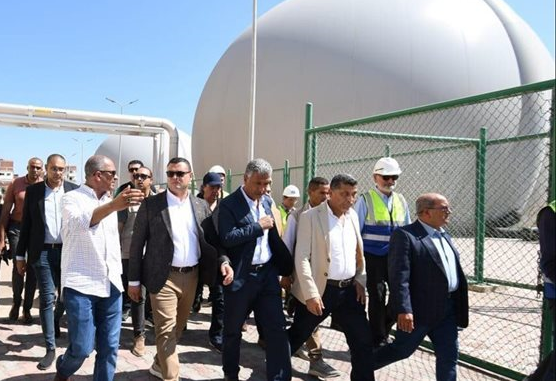Engineer Sherif El-Sherbiny, Egypt’s Minister of Housing, Utilities, and Urban Communities, inspected the Eastern Wastewater Treatment Plant in Alexandria. With a treatment capacity of 800,000 cubic meters per day, the plant serves approximately 4.5 million residents. The Minister was accompanied by officials from the Ministry of Housing and representatives from water companies. During the visit, they received a detailed briefing on the stages of wastewater treatment at the facility, which is considered one of the largest in the region. They also reviewed the sludge digestion project, which aims to combat climate change by using the methane gas generated during treatment to supply 60% of the plant’s electricity needs.
Engineer Ahmed Abdelkader, Head of the Executive Authority for Drinking Water and Wastewater, explained that the sludge digestion project at the Eastern Treatment Plant in Alexandria is designed to enhance the plant’s performance. It involves rehabilitating the first phase of the facility and treating the sludge using digesters. The project is expected to reduce sludge volume by 30%, thereby improving environmental conditions, minimizing pollution and unpleasant odors, and enabling the use of digested sludge to produce methane gas.

Abdelkader further elaborated that the sludge digestion project includes an inlet tank, four digesters each with a capacity of 16,000 cubic meters, sludge reception and storage tanks, a distribution building, two gas storage tanks, a biogas treatment unit, and an electricity generation facility. The project was executed by a consortium of Arab Contractors and the French company SUEZ, employing advanced technologies.
The treatment stages at the plant include:
-
Preliminary treatment, which removes solid waste, sand, and oils.
-
Primary treatment, where sludge is separated using 16 sedimentation basins.
-
Biological treatment, in which aerobic bacteria convert organic materials into settleable substances.
This visit underscores the government’s commitment to sustainable environmental solutions and upgrading infrastructure to meet the demands of urban expansion while addressing climate concerns.
